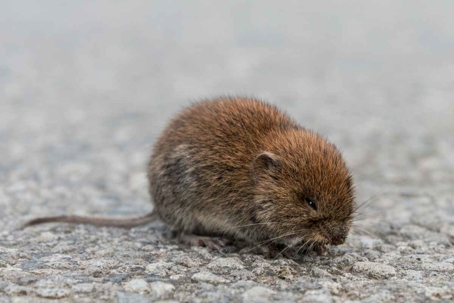Voles vs Mice
Being able to distinguish between mice and voles is crucial for a number of reasons. Although these two small rodents may look similar, they are actually quite different in terms of behavior, habitat, and potential impact on human health and the environment. Here are some of the reasons why it is important to be able to tell the difference between mice and voles:
- Pest Control: Mice and voles can both be considered pests due to their ability to damage crops and property. However, they have different habits and preferences. Mice are often found in buildings and can cause significant damage by chewing through wires, insulation, and other materials. On the other hand, voles are primarily found in fields and gardens, where they can damage crops and lawns by tunneling and feeding on roots. Knowing which species is causing damage can help in selecting the appropriate pest control measures.
- Disease transmission: Both mice and voles are known to carry diseases that can be transmitted to humans, such as hantavirus and Lyme disease. However, the species of rodent involved can affect the risk of disease transmission. For example, deer mice are the primary carriers of hantavirus, while white-footed mice are the main carriers of Lyme disease. Knowing which species is present can help in taking appropriate precautions to avoid exposure to these diseases.
- Environmental impact: Mice and voles can have different impacts on the environment, depending on their behavior and habitat. For example, voles are herbivores and can have a significant impact on the vegetation in their habitat, which can affect other species that rely on that vegetation. Mice, on the other hand, are often considered a prey species for other animals, which can have an impact on the overall ecosystem. Understanding the role of these rodents in the environment can help in making informed decisions about conservation and management.
Being able to tell the difference between mice and voles is important for a variety of reasons. While these rodents may look similar, they have distinct differences in behavior, habitat, and impact that make it important to be able to identify them correctly.
Mice vs Voles
Mice and voles are both small rodents, and while they share some similarities, they differ significantly in appearance, behavior, habitat, and the types of damage they cause. Understanding these differences is key to identifying which pest you’re dealing with and how best to control them. Here are some of the ways to distinguish between the two:
Physical Appearance
Mice:
Body shape: Slender and elongated.
Tail: Long, thin, and covered with sparse fur—often as long as their body.
Ears: Large and prominent.
Eyes: Large and dark.
Color: Typically light brown or gray with a lighter underside.
Size: About 5–8 inches long, including the tail.
Voles:
Body shape: Short, stocky, and compact.
Tail: Short and furry—usually less than half the body length.
Ears: Small and partially hidden in fur.
Eyes: Small and less noticeable.
Color: Brown or gray with a dense, soft coat.
Size: Around 4–6 inches long, including the tail.
Behavior and Habitat
Mice:
Prefer indoor and outdoor environments; they’re highly adaptable.
Commonly nest inside walls, attics, basements, and cluttered storage areas.
Excellent climbers and jumpers, capable of scaling vertical surfaces.
Omnivorous—eat grains, seeds, crumbs, and even small insects.
Active mainly at night and reproduce rapidly year-round.
Voles:
Primarily outdoor rodents that live in grassy or wooded areas.
Create shallow burrow systems and visible surface runways through turf and ground cover.
Poor climbers; rarely enter buildings.
Herbivorous—feed on roots, grass, bulbs, and bark.
Most active day and night, especially in cooler months, and populations peak in spring and fall.
Signs of Infestation
Mice:
Droppings: Small (⅛ inch), rod-shaped with pointed ends.
Gnaw marks on food packaging, wiring, and structures.
Scratching or scurrying sounds in walls or ceilings.
Nests made of shredded paper or insulation.
Voles:
Runways or trails in grass and surface soil.
Small burrow openings about 1–2 inches in diameter.
Girdled trees or shrubs (bark chewed near the base).
Damaged roots or dead patches of lawn caused by underground feeding.
Damage Potential
Mice:
Indoor threat: Contaminate food, chew electrical wiring, and damage insulation.
Health risk: Spread diseases like hantavirus and salmonella through droppings and urine.
Voles:
Outdoor threat: Destroy lawns, gardens, and landscaping by eating roots and bark.
Can kill young trees and plants through continuous gnawing and tunneling.
Control Methods
Mice:
Seal entry points and gaps around buildings.
Use snap traps or bait stations indoors.
Maintain cleanliness and store food in sealed containers.
Professional pest control is often necessary for recurring infestations.
Voles:
Remove dense vegetation and mulch that provide cover.
Use vole traps or repellents around gardens and trees.
Install barriers or underground fencing around vulnerable plants.
Professional treatment may include baiting and habitat modification.
Mice are indoor invaders and generalists, while voles are outdoor rodents specialized in damaging vegetation. Recognizing which you’re dealing with determines whether the focus should be on structural exclusion and sanitation (for mice) or lawn and landscape protection (for voles).

